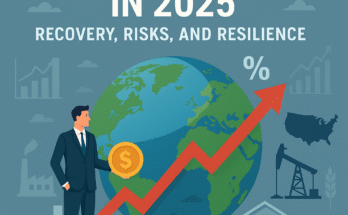In a quiet cove nestled along a rugged coastline, a scene unfolds that feels like it was lifted straight from the pages of a fantasy novel.

A young woman, clad in a bright red top and pink overalls, leans forward with curiosity etched across her face. She kneels in shallow, glassy water, her hand outstretched toward something truly extraordinary—a colossal open oyster shell resting among mossy rocks. Inside this massive shell lies an iridescent pearl, shimmering with hues of lavender, aqua, gold, and pink. It appears otherworldly, a surreal gem that defies expectation and evokes wonder. This image, while possibly staged or digitally enhanced, tells a story rich in symbolism, environmental intrigue, and the human connection to nature’s marvels.
A Glimpse Into the Imaginary: Real or Fabrication?
At first glance, the image seems to capture a real moment, but the sheer size of the oyster and pearl leads us to question its authenticity. Such a sight challenges our understanding of biology and natural scale—real pearls rarely exceed the size of a small marble, and oysters that produce them are typically no larger than a dinner plate. Here, however, the pearl is nearly the size of a beach ball, nestled within a shell that could easily cradle a human child.

This intentional exaggeration is not necessarily deceptive; rather, it highlights the limitless potential of imagination and storytelling. Whether through digital manipulation or sculptural art, this imagery taps into our primal awe of nature’s beauty and the treasures it hides beneath the surface.
Symbolism of the Pearl: A Universal Treasure
Pearls have long been revered as symbols of purity, wisdom, and rarity. Across cultures and epochs, they have held a special place in myth and meaning. In ancient China, pearls were believed to protect against fire and dragons, while in ancient Greece, they symbolized love and marriage. The Romans cherished them as the ultimate display of wealth and status.
In this image, the oversized pearl becomes a metaphor magnified—representing not just luxury, but also the hidden potential of the natural world and the transformative power of discovery. Its rainbow sheen reflects the diversity of thought, identity, and mystery. To reach out and touch such a pearl is to seek understanding, to long for connection with something larger than ourselves.
The Role of the Woman: Curiosity as Catalyst
The woman in the image, dressed in vibrant, playful colors, adds a narrative layer to the scene. She is the explorer, the seeker, the bridge between the known and the unknown. Her posture—cautious, yet intent—suggests a deep respect for what lies before her. She is not grabbing or taking, but reaching gently, almost reverently, toward the pearl.
Her presence invites viewers to place themselves in her shoes. What would you do if you stumbled upon such a sight? Would you take the pearl? Leave it? Tell others? Her expression encourages us to reflect on our relationship with nature: are we caretakers, conquerors, or curious visitors?
Nature’s Hidden Gems: The Real Science of Pearls
In reality, pearls form inside mollusks like oysters and mussels as a defense mechanism against irritants. When a grain of sand or parasite enters the shell, the mollusk secretes layers of nacre (mother-of-pearl) around the foreign body, eventually forming a pearl. Natural pearls are rare and take years to develop. Cultured pearls, now the standard in jewelry, are farmed under controlled conditions but still require immense patience and delicate care.
There are many varieties of pearls—freshwater, Akoya, Tahitian, and South Sea, each with its own characteristics and luster. None, however, match the fantastical proportions of the pearl in the image, which brings an element of surrealism to the natural process.



